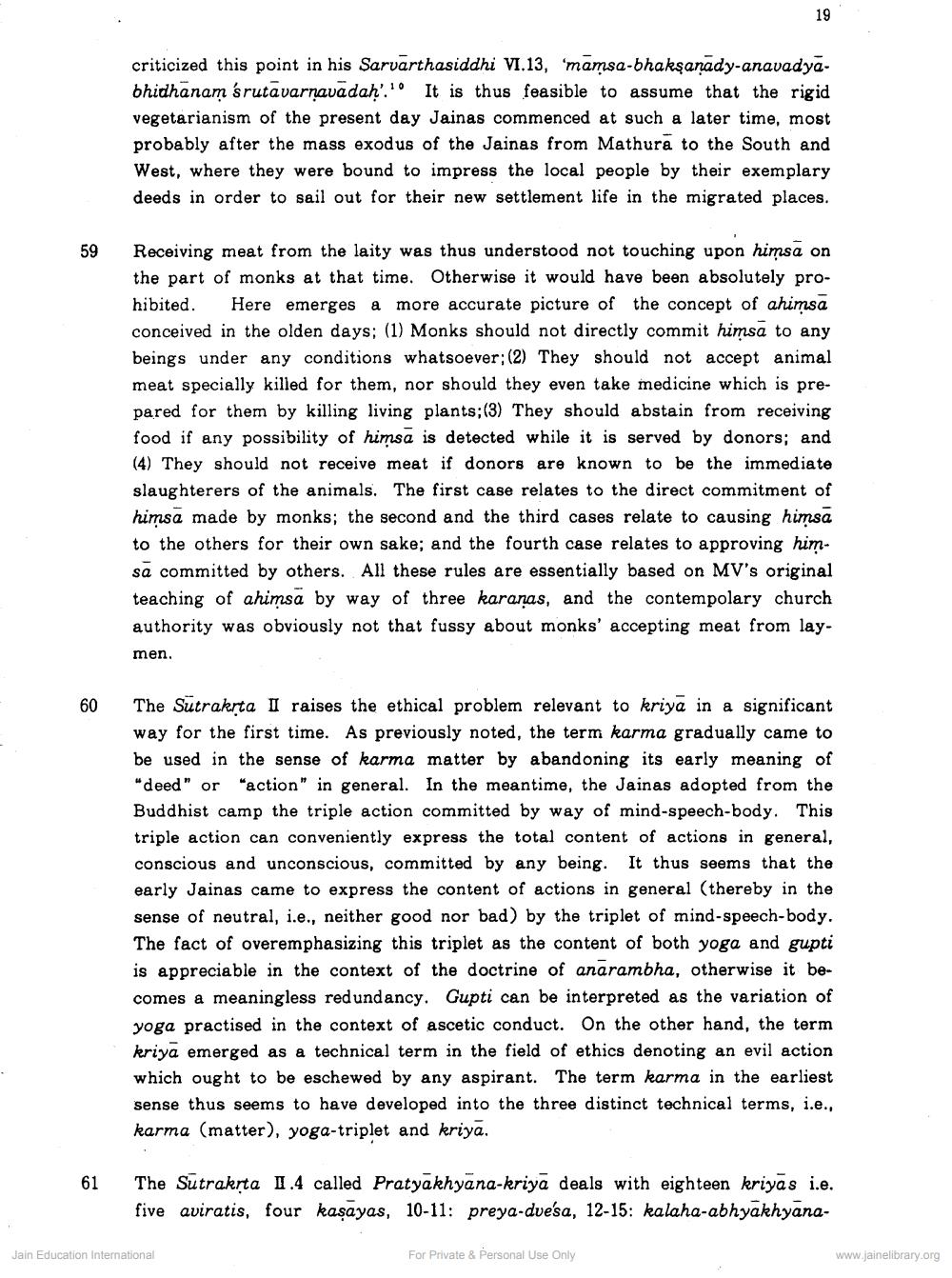________________
19
criticized this point in his Sarvarthasiddhi VI.13, 'mamsa-bhakşanady-anavadyabhidhanam śrutavarnavadah.! It is thus feasible to assume that the rigid vegetarianism of the present day Jainas commenced at such a later time, most probably after the mass exodus of the Jainas from Mathura to the South and West, where they were bound to impress the local people by their exemplary deeds in order to sail out for their new settlement life in the migrated places.
Receiving meat from the laity was thus understood not touching upon himsa on the part of monks at that time. Otherwise it would have been absolutely prohibited. Here emerges a more accurate picture of the concept of ahimsa conceived in the olden days; (1) Monks should not directly commit himsa to any beings under any conditions whatsoever; (2) They should not accept animal meat specially killed for them, nor should they even take medicine which is prepared for them by killing living plants;(3) They should abstain from receiving food if any possibility of himsa is detected while it is served by donors; and (4) They should not receive meat if donors are known to be the immediate slaughterers of the animals. The first case relates to the direct commitment of himsa made by monks; the second and the third cases relate to causing himsa to the others for their own sake; and the fourth case relates to approving him. sa committed by others. All these rules are essentially based on MV's original teaching of ahimsa by way of three karanas, and the contempolary church authority was obviously not that fussy about monks' accepting meat from laymen.
The Sutrakrta II raises the ethical problem relevant to kriya in a significant way for the first time. As previously noted, the term karma gradually came to be used in the sense of karma matter by abandoning its early meaning of "deed" or "action" in general. In the meantime, the Jainas adopted from the Buddhist camp the triple action committed by way of mind-speech-body. This triple action can conveniently express the total content of actions in general, conscious and unconscious, committed by any being. It thus seems that the early Jainas came to express the content of actions in general (thereby in the sense of neutral, i.e., neither good nor bad) by the triplet of mind-speech-body. The fact of overemphasizing this triplet as the content of both yoga and gupti is appreciable in the context of the doctrine of anarambha, otherwise it becomes a meaningless redundancy. Gupti can be interpreted as the variation of yoga practised in the context of ascetic conduct. On the other hand, the term kriya emerged as a technical term in the field of ethics denoting an evil action which ought to be eschewed by any aspirant. The term karma in the earliest sense thus seems to have developed into the three distinct technical terms, i.e., karma (matter), yoga-triplet and kriya.
61
The Sutrakrta 1.4 called Pratyakhyana-kriya deals with eighteen kriyas i.e. five aviratis, four kasayas, 10-11: preya-dve'sa, 12-15: kalaha-abhyakhyana
Jain Education International
For Private & Personal Use Only
www.jainelibrary.org




